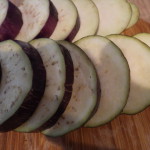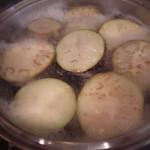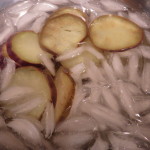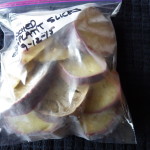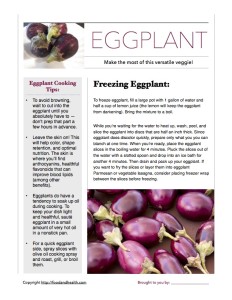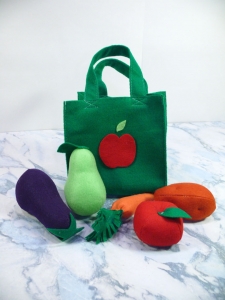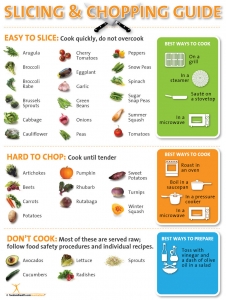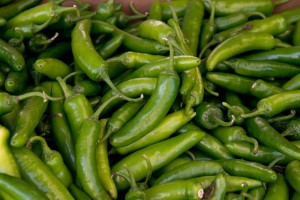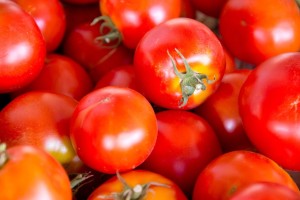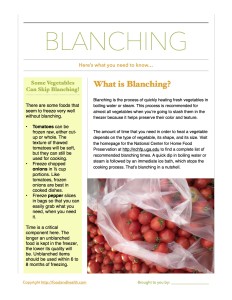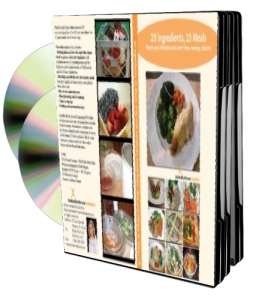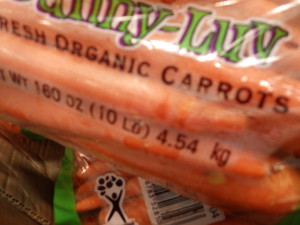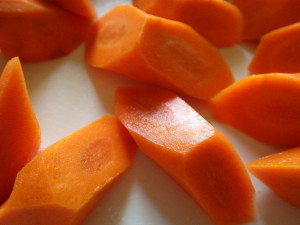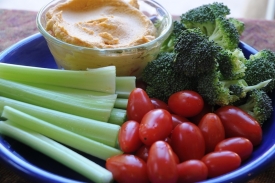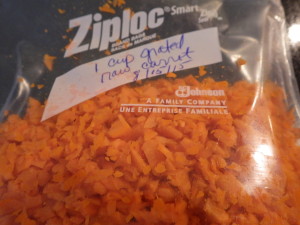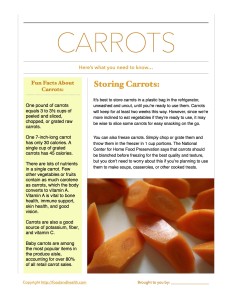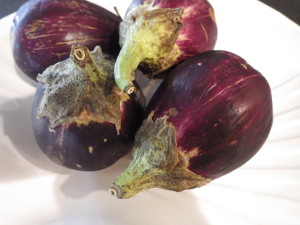 I recently got the best gift from a friend — 4 small eggplants from her garden. This is the same friend who brought me several pomegranates a couple years ago. I feel so lucky that I have friends that bring me wonderful fruits and vegetables — what great gifts!
I recently got the best gift from a friend — 4 small eggplants from her garden. This is the same friend who brought me several pomegranates a couple years ago. I feel so lucky that I have friends that bring me wonderful fruits and vegetables — what great gifts!
Anyway, back to the eggplant.
I don’t usually buy eggplant, largely because I really don’t know what to do with it. My husband likes eggplant Parmesan, but he usually orders it in restaurants. I’d heard so many rumors and old wives’ tales about how to cook eggplant, and found myself baffled by all the conflicting information. For example, do I need to salt the eggplant? I remember my husband’s aunt always salting her eggplants and then weighing them down with books. On the other hand, according to an archived article from Food and Health Communications, you don’t have to bother with this if the eggplants are very fresh.
So how should I treat my eggplants?
Since salting can help remove the bitterness from an eggplant, I decided to salt mine. If you’d like to salt your eggplants before you cook them, first you need to slice or dice the eggplant into the shape you want to use. Sprinkle everything with about half a teaspoon of salt (not the half cup my husband’s aunt used to use) and then let everything sit in a colander for 30-60 minutes while the eggplant drains. Once that time is up, press out any excess liquid and dry the eggplant with a clean towel. You can also rinse the eggplant to remove extra salt before drying it.
So, there I was with salted eggplant. How did I want to cook it?
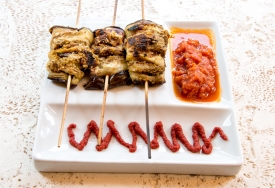 I dug further into the Food and Health Communications recipe archive and found a few articles about eggplant, along with several healthful recipes. Here are some of my favorites…
I dug further into the Food and Health Communications recipe archive and found a few articles about eggplant, along with several healthful recipes. Here are some of my favorites…
- Grilled Eggplant Rolls
- Mediterranean Couscous
- Ratatouille
- Roasted Eggplant Bowl
- Roasted Vegetable Pasta
With time running short, I decided that I wanted to preserve my eggplants to cook later.
According to the National Center for Home Food Preservation, eggplant can be frozen. As far as I could tell, there is not a research-tested recipe for safely canning eggplant.
So, freezing it was!
To freeze eggplant, fill a large pot with 1 gallon of water and half a cup of lemon juice (the lemon will keep the eggplant from darkening). Bring the mixture to a boil. While you’re waiting for the water to heat up, wash, peel, and slice the eggplant into discs that are half an inch thick. Since eggplant does discolor quickly, prepare only what you you can blanch at one time. When you’re ready, place the eggplant slices in the boiling water for 4 minutes. Pluck the slices out of the water with a slotted spoon and drop into an ice bath for another 4 minutes. Then drain and pack up your eggplant. If you want to fry the slices or layer them into eggplant Parmesan or vegetable lasagna, consider placing freezer wrap between the slices before freezing.
That’s basically what I did, with one little twist. I put the well-drained eggplant slices on a tray and froze them individually. Then I transferred everything to a freezer bag. Hooray! Now I have two quart bags full of sliced eggplant for later this year!
My research also led me to discover a bunch of great eggplant cooking tips. If you ever find yourself with a spare eggplant or two, consider the following…
- To avoid browning, wait to cut into the eggplant until you absolutely have to — don’t prep that part a few hours in advance!
- Leave the skin on! This will help color, shape retention, and optimal nutrition. You can find anthocyanins in the purple skin of an eggplant, and since anthocyanins have a positive impact on blood lipids, it would really be a shame to remove the skin.
- Eggplants do have a tendency to soak up oil during cooking. To keep your dish light and healthful, sauté eggplant in a small amount of very hot oil in a nonstick pan.
- Want a quick eggplant side? Spray slices with olive oil cooking spray and roast, grill, or broil them.
Anyway, that’s a brief recap of my eggplant adventures. I hope you liked it!
By Cheryle Jones Syracuse, MS, Professor Emeritus at The Ohio State University
Here’s a handout that features the most helpful points from today’s post. Get your copy today!
And for more fun with eggplant, drop by the Nutrition Education Store!

I Heart Fruit and Veggies Bookmark



